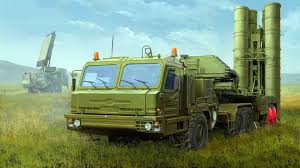
The ongoing Ukraine conflict has had minimal impact on Russia’s spare parts supply for Indian military aviation, according to Air Chief Marshal VR Chaudhary, as cited by idrw.org. This resilience can be attributed to the ‘Indinization’ strategy, wherein India increasingly manufactures spare parts for Soviet and Russian-era aircraft under license. However, despite these efforts, some supply issues persist, particularly with systems acquired from Russia such as the IL-76 transport aircraft and older air defense systems, potentially compromising operational readiness.
Local sources suggest that India is actively addressing these challenges by expanding the role of its industries in producing critical spare components, building upon its initial indigenization approach. Meanwhile, the Indian Air Force prides itself on its fleet of 17 Il-76 military transport aircraft, affectionately known as ‘Gajraj’, which serve as the backbone of India’s strategic airlift capabilities. Equipped with four D-30 KP turbofan engines, these aircraft boast enhanced long-distance haulage capabilities, capable of carrying heavy loads up to 50 tons.
Inside the Il-76, an expansive cargo bay stands ready to accommodate various loads, facilitated by features like an overhead crane and winch system for efficient loading and unloading. Pilots rely on advanced avionics including Doppler navigation radar, automatic direction finder, and distance-measuring equipment for precise navigation and cargo delivery. Additionally, the aircraft’s defensive capabilities, including radar warning receivers, infrared flare dispensers, chaff dispensers, and a defensive tail gun turret, ensure mission success even in the face of potential threats.
Russia remains committed to fulfilling its obligations to India despite the complexities introduced by the Ukraine conflict. In anticipation of potential disruptions, BulgarianMilitary.com accurately foresaw an opportunity for India to reduce its reliance on Russian defense supplies by implementing a robust, long-term domestic strategy.
While India faces challenges in certain defense sectors, it continues to receive armaments from Russia, staying true to previous agreements. Most recently, India took delivery of the initial batch of 24 Igla-S man-portable anti-aircraft missile systems, accompanied by an additional 100 missiles. This delivery is part of a larger order comprising 100 systems and 400 missiles. Notably, India’s foresight in localizing the production of Igla-S under licensing terms with Russia helps shield it from the adverse effects of the Ukraine conflict.
Additionally, the joint production of the BrahMos medium-range ramjet supersonic cruise missile further solidifies the strategic partnership between India and Russia. However, delays have surfaced concerning India’s indigenous defense systems, particularly the S-400 Triumph.
Confidential reports indicate a setback in the delivery timeline for two SA-21 Growler anti-aircraft missile systems, also known as the S-400 Triumph. Originally scheduled for delivery in 2024, these components are now expected to arrive in the second half of 2026, specifically between July and September. Meanwhile, recent developments in October revealed progress in the production of the remaining two S-400 units ordered by India.
Photos circulating on Russian Telegram pages depict two 51P6A launchers, crucial components of the S-400 missile launcher system, in transit. These launchers, essential for firing the 9M96E missiles, signify the final stage of production and assembly for the S-400 systems. Once assembly is complete and quality control tests are passed, these systems will be prepared for shipment to India, likely by the end of 2024.




